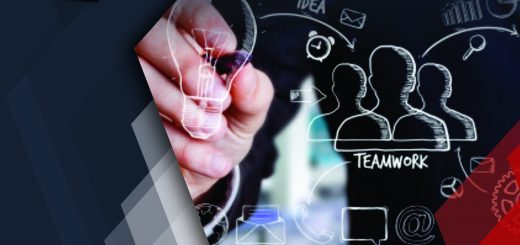Software & Machine Learning Patents – Key Differences & Best Practices for Patent Drafting
Artificial Intelligence (AI) and its techniques such as Machine Learning (ML) and Fuzzy Logic have become an intrinsic part of our daily lives. Right from how Google Maps are being used for traffic speed prediction, the way Dynamic Pricing supports ride-sharing apps such as Uber and Lyft, and how Autopilot feature on flights controls the aircraft – advanced machine learning algorithms are thus changing how we travel, shop, and interact with each other.
We can gauge the popularity of machine learning from the fact that 150,637 patent families concerned with AI techniques have been published until 2018. This makes machine learning the dominant technique (89% of total AI patents) that has been witnessing a rapid rise over the years. For inventors seeking a patent in this domain, it is imperative to understand the difference between software and machine learning at a fundamental level.
This article will discuss the main differences in filing a patent for software and machine learning and the challenges faced by the applicants. But first, let us understand the difference between software and machine learning, and then analyze the difference in patent filings and grants.
Table of Contents
Fundamental difference between Software and Machine Learning
The primary aim of both software and machine learning is quite similar. Both are developed to solve complex human problems by better understanding the problem area. While software helps automate a task by writing a set of rules that a computer follows, machine learning adds extra depth and automates the task of writing the rules itself. Upon developing a software, human intelligence is applied to create a solution and frame it as an exact program for a computer to execute. However, in machine learning, data scientists usually collect the input data and the probable output values. Next, the computer finds a program that calculates an output for each input value. The concept is explained in Figure 1 below:

Now that we understand the fundamental difference between traditional programming and machine learning, let us know what software patents are and the challenges in proving patentability for software patents.
Software Patent and the Difficulty in Proving its Patentability
A software patent is granted for those patents that improve computer performance with the help of a new computer application. However, there is no legal or specific definition for a software patent. Moreover, different countries across the globe place dissimilar restrictions on patenting software innovations. For example, U.S. patent law does not allow patents with abstract ideas. This restriction is used to deny software patents. For receiving the software patent grant, the patentability of the subject matter is critical. The challenges in proving the patentability are discussed below.
For example, a software program can employ complex systems to match or surpass a physical process or the machine and thus become challenging to classify the software program as a new invention, algorithm, or design. Besides, not all inventions and innovations are granted patent rights. For example, scientific theorems, mathematic algorithms, and techniques are not patentable.
Having understood the basics of software patents and the difficulty in proving its patentability, let us discuss ways to patent a software program in India.
How to Patent a Software program in India
Compared to other technology domains, obtaining a patent for a software program in India is a challenging task. To successfully obtain such a patent, the applicant must draft the application, highlighting the features that demonstrate technical effect and advancement in claims. Moreover, such claims must be properly enabled in the specification of software patent applications. Such an approach would boost the chance of receiving a patent grant.
The main requirement for patentability of the software includes inventive steps, novelty, industrial application, and overcoming section 3(k) that discloses algorithm and computer program per se, as not patentable subject matter. Applications must be filed, keeping the points in section 3(k) at the forefront.
Now that we understand how to patent a software product in India, let us discuss ways to draft claims and specifications in software patents.
How to Draft Claims and Specifications in Software Patents
The five basic steps for drafting claims and specifications in software patents are listed below:
- Treat the innovation as a problem-solution concept
- Prepare a neat and labeled flow chart diagram to cover all the features and functions disclosed by the innovation
- Draw system architecture or block diagram representing fundamental hardware elements connected through the network
- Allow proper synchronization between the block diagrams and flow charts
- Draft patent claims (apparatus or systems) illustrating all block diagrams and method claim elements
The steps to draft claims and specifications in software patents (as described above) prove to be useful while obtaining AI/ML patents.
AI/ML Patents
According to U.S. patent law, an ML algorithm cannot be patented directly. However, the law does allow a series of steps in an algorithm to be patented. The underlying logic is that algorithm is seen as a series of mathematical steps and procedures under the U.S. patent law. Therefore, while software can be patented because it is regarded as a finished product, machine learning algorithms are considered abstract.
Critical Issues in Patent Subject Matter Eligibility of AI/ML Patents
AI/ML subject matter becomes patent-eligible only when it achieves a technical purpose and, at minimum, offers a technical effect that does more than performing the solution more quickly or efficiently. The general application of AI/ML to solve a problem predictably is not eligible for patentability. However, when the general application is supplemented with the technical contribution, the AI/ML patent applications are considered eligible for patentability. For example, using a neural network (an ML algorithm) in a heart-monitoring apparatus to identify irregular heartbeat qualifies as a technical contribution.
Now that we understand AI/ML patents and critical issues in patent subject matter eligibility of AI/ML patents let us discuss creative ways to draft claim specifications in software patents.
How to Draft Claims and Specifications for AI/ML Patents
The focus of the claim drafting must be in a direction that yields positive results. The guidelines for drafting an effective claim and specifications for AI/ML patents are listed below:
- Focus on the structure of the ML model in the claim
- Identify if the invention lies in the training phase or execution phase or both
- Claim the training process
- Emphasize the input data preparation
- Cover the input mapping to the model
- Claim the post-processing and interpret the output data
- Draft different claim sets for the training phase and the execution phase
- Avoid the claim of conventionally applying an existing model to an existing data
Conclusion
We can conclude from the above-discussed points that the process of obtaining software and ML patent are pretty dissimilar. The claim drafting is entirely different when filing a patent for software and ML. Apart from the fundamental differences between the two, patent subject matter eligibility also has a divergence. Although ML patents can be filed on their own by an organization, it is recommended to avail services of reliable IP experts.
Sagacious IP specializes in delivering next-generation IP solutions leveraging the benefits of emerging technologies such as AI and machine learning. It offers solutions to its clients through four delivery centers and offices in six countries. So far, the company has delivered more than 25,000 projects globally, proving its mettle in the world of intellectual property. In addition, through its Patent Filing & Prosecution Service, individuals and businesses can secure inventions by leveraging a solid patent draft prepared by a skilled patent professional. It ensures your invention is protected most swiftly and cost-effectively. Click here to know more.
- Samaksh Verma (Patent Drafting Filing & Prosecution) and the Editorial Team.
Having Queries? Contact Us Now!
"*" indicates required fields




